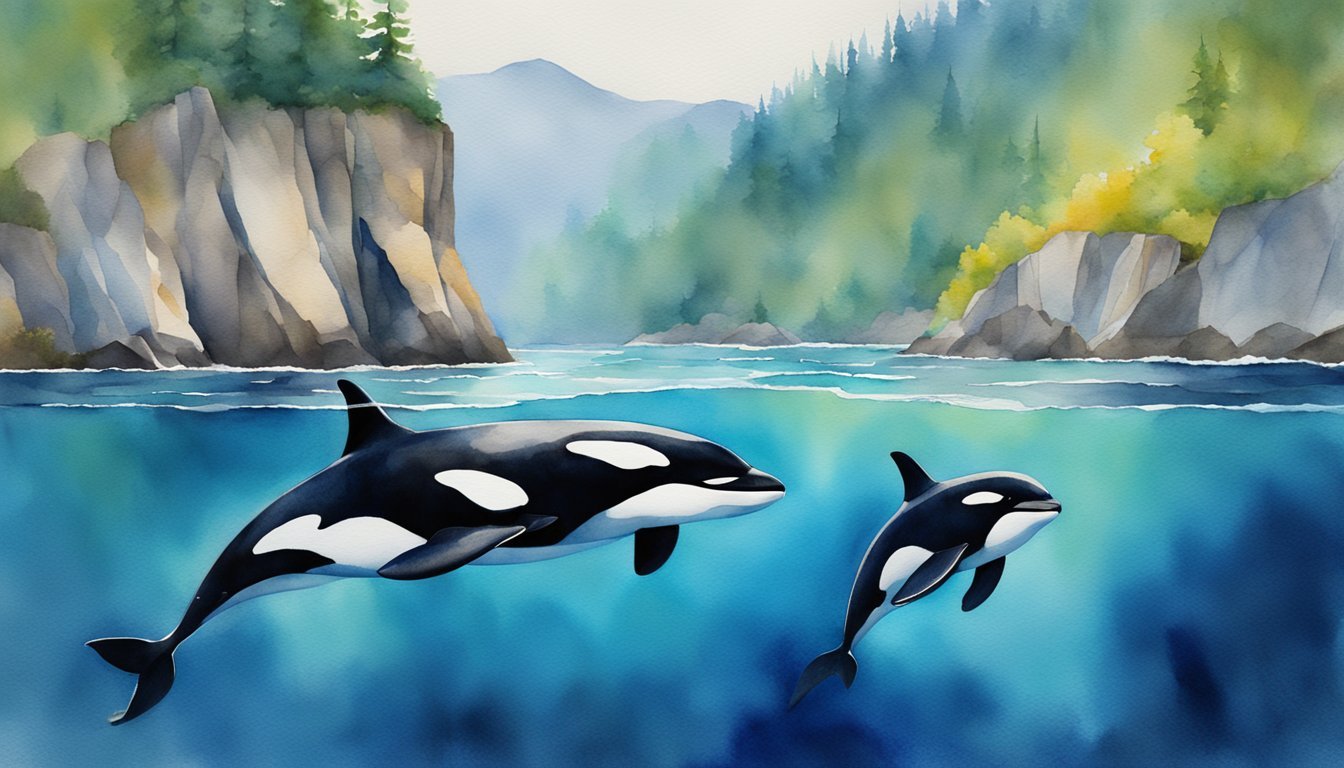Orcas Lifespan Overview
The lifespan of orcas, also known as killer whales, is marked by significant differences when comparing those in the wild to those in captivity. These impressive marine mammals have varied lifespans influenced by numerous biological and environmental factors.
Lifespan in the Wild vs. Captivity
In the wild, orcas enjoy a longer life span, with female orcas often outliving males. Female orcas can live an average of 50 to 80 years, with some exceptional individuals surpassing this range. Wild male orcas have an average lifespan of approximately 29 years, though they can live up to 60 years in some instances. However, orcas in captivity typically have shorter lifespans due to various constraints of the captive environment. Though specific figures vary, it’s commonly recognized that captive orcas face challenges that can lead to reduced longevity.
Factors Affecting Orca Lifespan
Several factors contribute to the lifespan of an orca, whether they live in the wild or in captivity. In the wild, the diet of an orca, which consists mainly of fish, squid, and marine mammals, plays a crucial role in their overall health and longevity. A stable and abundant food source supports a longer life. The social structure of orcas is also vital; they live in tightly knit groups called pods, providing social interaction and cooperative hunting methods which can contribute to individual survival.
Conversely, orcas in captivity face different challenges. Stress is a significant factor, arising from confinement and the lack of freedom to roam vast ocean distances. Pollution and environmental contaminants also affect both wild and captive orcas, potentially leading to health issues that can reduce lifespan. Predation is not a concern for captive orcas but is a natural part of life for wild orcas. Unnatural causes of death in captivity, such as infections and other health problems that may not be as prevalent in the ocean, can impact the longevity of these majestic creatures.
Orcas in Their Habitat

Orcas, also known as killer whales, are apex predators with complex behaviors that vary greatly depending on their habitat. They are highly adaptable and can be found in every ocean on the planet, making them the most widely distributed marine mammals.
Diet and Hunting Techniques
The orca’s diet is as broad as its habitat, where they utilize different hunting techniques based on prey availability. In some regions, orcas specialize in prey such as seals, while in others, they may feed primarily on fish or even other marine mammals, such as dolphins or whales. These cetaceans often work in groups to corner schools of fish or create waves to wash seals off ice floes, exhibiting their strategic intelligence and cooperation.
Social Structure and Reproduction
Orcas live in matrilineal family groups or pods, which are led by the oldest female, often the mother or grandmother. Members of a pod communicate with a complex array of vocalizations and are deeply social, sharing in the responsibilities of hunting and caring for their young. Reproduction takes place within these social structures, with mothers giving birth to a calf approximately every three to ten years after a gestation period that can last up to 18 months. These structured social relationships play a vital role in the teaching and passing down of traditional feeding habits and hunting techniques to the younger members of the pod.

